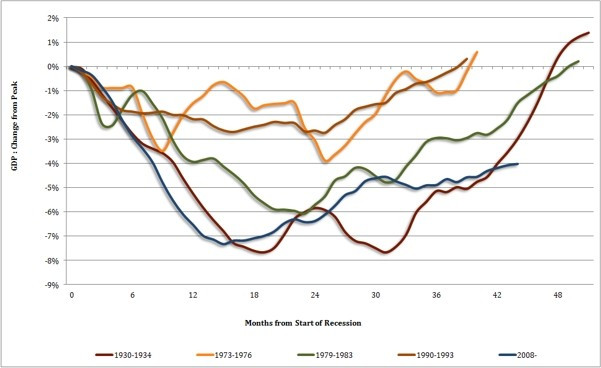Great Depression Tops the List With Longer Recovery Period

Recessions have shaken the world economy more than once and each time the world has come out of it at a different pace. The world can still breathe easy as the gravity of the current recession, in terms of its recovery period, has not yet surpassed the Great Depression of 1930.
The Great Depression, which started in 1929, had affected economies worldwide and lasted for nearly four years. Most of the nations came out of it by 1934. The 1970s witnessed two periods of economic slowdown, in 1973-76 and in 1979-1983. Again in seven years, the world economy went for another period of economic slowdown from 1990-1993.
Economists and analysts are skeptical about the recovery cycle of the current economic meltdown which has gripped the world. Britain has already shown the slow path of recovery with its lower manufacturing data and fears of double dip recession.
The UK economy is now 4 percent smaller than it was at its peak in the first three months of 2008, having recovered 3.1 percent from its lowest point in the third quarter of 2009. "Worse than the position we were in at the same stage of recovery following the Great Depression," says George Buckley, UK economist at Deutsche Bank, reports The Telegraph.
A graphical tracking of the previous recessions by the National Institute of Economic and Social Research (NIESR) also shows the Great Depression as the longest.
The current economic meltdown started in 2008, which has largely been seen as fallout of individual domestic issues and as European phenomena, has yet to find a resolution. Already the major world economies are reeling under unemployment and job losses and many of them are witnessing popular unrest like "Occupy London." But experts are not viewing this only as a developed economy problem. Emerging markets which are considered relatively unaffected to the current "western problem" cannot remain insulated in the long run.
© Copyright IBTimes 2025. All rights reserved.





















